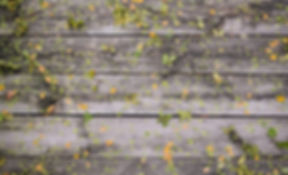
Dance
Since spring 2020, Mojca is working with Canadian dance historian and choreographer Edmund Fairfax on the reconstruction of 18th century ballet. Some examples can be viewed underneath - please scroll down or click on title: Caractères de la danse (a suite of Jean-Féry Rebel) / Gavotte / Sarabande / Entrée grave
Jean-Féry Rebel’s Les caractères de la danse of 1715 is a suite of “dance characters,” i.e., musical dance types (sarabande, chaconne, etc.). Like some of his other instrumental pieces, this work was to inspire choreographers and to serve as bona fide dance music. Perhaps the most famous choreographic treatment was that by Prévost, first mentioned in 1721. An entry in the 'Nouveau Mercure' suggests that her version may have been a mix of pantomime and dance, like her treatment of Rebel’s 'Le caprice', and like Cammasse’s version of 'Les caractères de la danse' from 1738-39, although the latter was set to a new score by Nicolas Racot de Grandval and with different scenarios. In dance parlance, “character” connoted especially comic roles, wherein pantomime was common (cf. the expression 'pas de caractère' or ‘character dances’ in use already by this time). Ultimately, very little is known, however, about what these different choreographic treatments actually looked like. The dances presented here show newly created choreography without pantomime performed in the serious style (courante, menuet, sarabande, musette) and half-serious style (bourrée, chaconne and sonata finale) of the theater circa 1730 (two of the four traditional styles of eighteenth-century ballet), based on Edmund Fairfax’s research.
Dance: Mojca Gal Choreography: Edmund Fairfax Music performance: Thys Grobelnik (harpsichord) and Mojca Gal (violin)
This is a recreation of a dance in the half-serious style (one of the four conventional styles of eighteenth-century ballet), based on a careful and thorough consideration of the primary sources for this period. The music, a gavotte by François-Joseph Gossec, is taken from Maximilien Gardel’s ballet Le pied de bœuf (1787), specifically from the scene called the “pantomime du jeu du pied de bœuf.” In it, “le pied de bœuf” (a game similar to that known in the English-speaking world as “One Potato, Two Potato”) was played three times as part of the pantomime, which ended apparently with a pas de deux to this gavotte, danced by Laure and Auguste Vestris. This particular scene is said to have been arranged originally by Gaétan Vestris for his protégé Laure, and Maximilien Gardel then used it as the core scene in a new ballet. Choreography by Edmund Faifax, dance and musical arrangement by Mojca Gal.
This gavotte is a recreation of a dance in the so-called half-serious or demi-caractère style (one of the four traditional styles/techniques of eighteenth-century ballet), which was a graceful but animated jumping style. The choreography is based on a few surviving examples of this genre in notation as well as on descriptions of the style in a variety of primary sources. The music is from Rameau’s opera Les Indes galantes (1735), and both the choreography and dance technique are intended to reflect practices in this style current by the 1730s.
Dance: Mojca Gal Dance Reconstruction: Edmund Fairfax Musical Performance: Thys Grobelnik Basel, June 2021
This "Entrée grave" is found in Gaudrau’s collection of dances (c1714) choreographed by Pécour. The piece is entitled an “entrée for two men, danced by Messieurs Marcel and Gaudrau in the opera of Persée” by Lully, specifically in the Paris Opéra’s remounting of the work in 1710. The music corresponds to the “Entrée des divinités infernales” in the second act, and so the dance was a duet for two of the divinities from the underworld who emerge bearing gifts in order to aid Perseus.
This piece was almost certainly in the serious style (one of the four traditional styles/techniques of eighteenth-century ballet), which was mainly a more terre-à-terre genre typically performed to slower tempi, relative to the other styles. The piece is notated as a duet with one dancer mirroring the other, but in this reconstruction, the dance has been adapted as a solo, by removing one of the dancing parts and introducing a couple of alterations to the choreography. The notation describes only the movement of the feet; the upper body movements and orientations of the body have been reconstructed based on a variety of other primary sources. Before circa 1730, women theatrical dancers were expected to be more modest in their movements than men, but in this reconstruction the dancer is performing as a man.
Dance: Mojca Gal - Dance Reconstruction: Edmund Fairfax - Musical Performance: Mojca Gal and Bruno Hurtado Gosalvez
The “Sarabande pour deux hommes” is a theatrical dance which appears in notation in Feuillet’s collection of solos and duets choreographed by Pécour (1704). The sarabande is said to have been “danced by Monsieur Piffetot and Monsieur Chevrier in the opera Alcide,” which was mounted at the Paris Opéra in 1693. Like the other dances in the collection, this piece was almost certainly in the serious style (one of the four traditional styles/techniques of eighteenth-century ballet), which was mainly a more terre-à-terre genre typically performed to slower tempi, relative to the other styles. This sarabande is notated as a duet, with one dancer mirroring the other, but in this reconstruction, the dance has been adapted as a solo, by removing one of the dancing parts and introducing a very small number of alterations to the choreography. The notation describes only the movement of the feet; the upper body movements and orientations of the body have been reconstructed based on a variety of other primary sources. Before circa 1730, women theatrical dancers were expected to be more modest in their movements than men, but in this reconstruction the dancer is performing as a man. The original music has been replaced with a sarabande from a Bach partita in b minor for violin solo, BWV 1002.
Dance: Mojca Gal / Dance Reconstruction: Edmund Fairfax / Musical Performance: Mojca Gal
Basel, June 2021